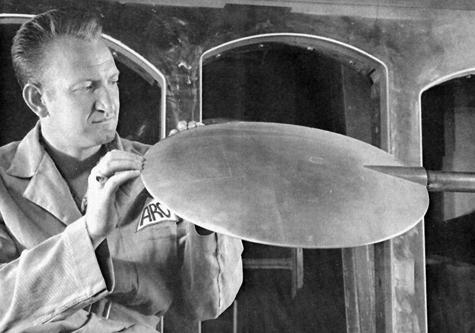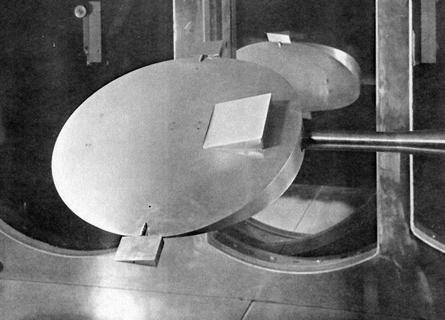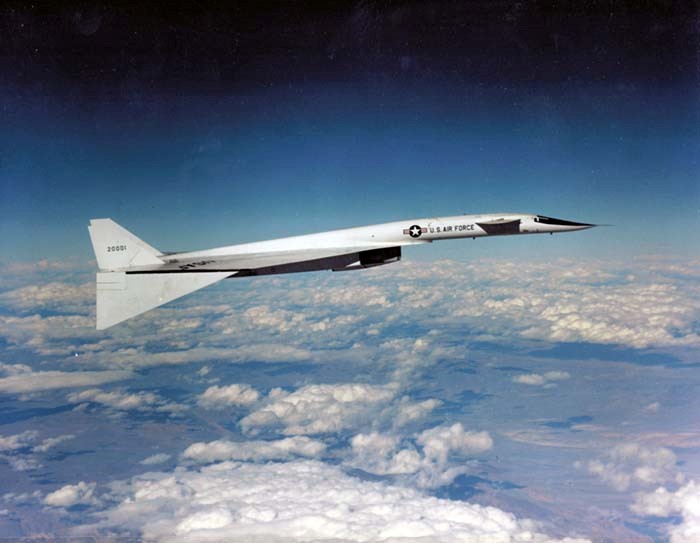It looks like you're using an Ad Blocker.
Please white-list or disable AboveTopSecret.com in your ad-blocking tool.
Thank you.
Some features of ATS will be disabled while you continue to use an ad-blocker.
share:
I stumbled across this in regards to the B 70 Valkyrie and thought a few of my fellow ATS aviation fans would find some interest in a quick post.
Most on here who follow such things already know that in the mid 1950's the U.S.A.F had focused their strategic nuclear delivery penetration philosophy on fast and high to defeat manned interceptors.
At the same time, the Soviet Union nuclear interdiction efforts resulted in the development an early example of the modern A2/AD network augmented by the SA-2 Guideline surface to air missile.
While we know in hindsight that the advent of the ICBM combined with the asymmetric defensive advantage of the radar guided surface to air missile killed the B 70, Convair had a trick up their sleeve in response to the deployment of the SA-2 that I hadn't heard about until now.
Project number WS-740A or "Pye Wicket"


Convair Pye Wacket
Convair Pye Wacket Feasibility Study PDF Download
Pye Wacket Wiki entry
Life Magazine Oct 17, 1960 "The Furor over a fantastic Plane"
Cool stuff, huh?
It seems the Pye Wicket program had some traction for a couple of years but was cancelled during the B 70 program cut back to 2 airframes in 1961.
I thought the topic well suited to ATS as the airframe was a circular disc and the projected performance definitely was in the realm of "unearthly" from a layman observers perspective. I wasn't able to discern whether there were actual flight tests or not but clearly it went far enough for wind tunnel and rocket sled testing.
Possibly another piece in the to the puzzle regarding why some people have been led to believe that the government was/is reverse engineering flying saucers from outer space.
 Obligatory B 70 for the uninitiated.
Obligatory B 70 for the uninitiated.
Most on here who follow such things already know that in the mid 1950's the U.S.A.F had focused their strategic nuclear delivery penetration philosophy on fast and high to defeat manned interceptors.
At the same time, the Soviet Union nuclear interdiction efforts resulted in the development an early example of the modern A2/AD network augmented by the SA-2 Guideline surface to air missile.
While we know in hindsight that the advent of the ICBM combined with the asymmetric defensive advantage of the radar guided surface to air missile killed the B 70, Convair had a trick up their sleeve in response to the deployment of the SA-2 that I hadn't heard about until now.
Project number WS-740A or "Pye Wicket"


Project "Pye Wacket", officially known as the Lenticular Defense Missile (LDM) Program and by the project number WS-740A, was instituted in 1958 in response to a US Air Force request for a Defensive Anti-Missile System (DAMS)....
.... The specifications for the proposed DAMS called for an air-launched defensive missile, capable of engaging incoming missiles at relative speeds of up to Mach 7, surviving a rate of acceleration between 60 g to 250 g, and being able to undertake rapid terminal-phase guidance changes in any direction.
Following initial studies and wind-tunnel testing at the Air Proving Ground Center and Arnold Engineering Development Center,a radically unconventional design emerged that featured a lenticular, wedge-shaped airframe. The lenticular design was considered to have the best handling characteristics at extremely high angles of attack, and would theoretically possess ideal mass distribution, giving the missile outstanding terminal agility. In addition, the lenticular design allowed for omnidirectional launching from the carrying aircraft.
Following the feasibility studies, a contract for the development of the DAMS design was awarded to the Convair division of the General Dynamics Corporation in Pomona, California in 1959. Wind tunnel testing of several options for control of the missile resulted in an arrangement of six small rocket thrusters being selected for reaction control. The airframe of the missile was constructed of magnesium alloy, and main power would be provided by three Thiokol M58A2 solid-fuel rockets
Convair Pye Wacket
Convair Pye Wacket Feasibility Study PDF Download
Pye Wacket Wiki entry
Life Magazine Oct 17, 1960 "The Furor over a fantastic Plane"
Cool stuff, huh?
It seems the Pye Wicket program had some traction for a couple of years but was cancelled during the B 70 program cut back to 2 airframes in 1961.
I thought the topic well suited to ATS as the airframe was a circular disc and the projected performance definitely was in the realm of "unearthly" from a layman observers perspective. I wasn't able to discern whether there were actual flight tests or not but clearly it went far enough for wind tunnel and rocket sled testing.
Possibly another piece in the to the puzzle regarding why some people have been led to believe that the government was/is reverse engineering flying saucers from outer space.

edit on 30-9-2019 by Drunkenparrot because: added text
looks perfect for a future false flag alien invasion
to unite the world under a new order
gov/msm seems ok with ppl believing us is backengineering tech cause it makes us look strong enuf to capture even alien tech
what looks bad thus is never confirmed is et's visiting and we not controlling it cuz then other countries realize we aren't as advanced as we've made ourselves out to be (ie, nuking placing, feet on the moon, etc)
to unite the world under a new order
gov/msm seems ok with ppl believing us is backengineering tech cause it makes us look strong enuf to capture even alien tech
what looks bad thus is never confirmed is et's visiting and we not controlling it cuz then other countries realize we aren't as advanced as we've made ourselves out to be (ie, nuking placing, feet on the moon, etc)
a reply to: Drunkenparrot
There was a lot of thinking around then that a UFO shaped craft would be able to withstand much higher acceleration, and have a higher top speed. The truth turned out to be that the shape makes them much more unstable, and have stability issues.
There was a lot of thinking around then that a UFO shaped craft would be able to withstand much higher acceleration, and have a higher top speed. The truth turned out to be that the shape makes them much more unstable, and have stability issues.
Some of the work on these Convair lenticular designs was actually done at the rocket sled site in Utah/Grand Canyon.
One of the more conventional Hughes designs considered for DAMS became the armament for the YF-12 (the AIM-47).
The math works, but the program's fate is still a bit obscure.
One of the more conventional Hughes designs considered for DAMS became the armament for the YF-12 (the AIM-47).
The math works, but the program's fate is still a bit obscure.
a reply to: Zaphod58
Natural stability was actually quite good, even at high Mach. It is managing control surfaces and making it change directions in a controlled manner that is a challenge. Might have been a touch to much to ask from the early 60's. I can dig up some supporting maths later.
Natural stability was actually quite good, even at high Mach. It is managing control surfaces and making it change directions in a controlled manner that is a challenge. Might have been a touch to much to ask from the early 60's. I can dig up some supporting maths later.
a reply to: RadioRobert
That was more an in general, for all the attempts, not just Pye Wacket. Such as the air car, that they couldn't even keep stable a few feet off the ground.
That was more an in general, for all the attempts, not just Pye Wacket. Such as the air car, that they couldn't even keep stable a few feet off the ground.
a reply to: abe froman
They were supposed to try that with Project 1794. Considering it was Avro, and similar to the Aircar, it's doubtful it worked well. The wind tunnel tests went well, but it was never said if they actually flew it or not.
They were supposed to try that with Project 1794. Considering it was Avro, and similar to the Aircar, it's doubtful it worked well. The wind tunnel tests went well, but it was never said if they actually flew it or not.
edit on 9/30/2019 by Zaphod58 because: (no reason given)
originally posted by: Zaphod58
a reply to: Drunkenparrot
There was a lot of thinking around then that a UFO shaped craft would be able to withstand much higher acceleration, and have a higher top speed. The truth turned out to be that the shape makes them much more unstable, and have stability issues.
They just haven’t installed the anti-gravity tech. That’ll settle OL’ girl down and she’ll run like a scalded dog.
originally posted by: RadioRobert
a reply to: Zaphod58
Natural stability was actually quite good, even at high Mach. It is managing control surfaces and making it change directions in a controlled manner that is a challenge. Might have been a touch to much to ask from the early 60's. I can dig up some supporting maths later.
If i am reading the graphs attached to the feasibility study PDF linked above correctly, both static and dynamic stability increased with mach number.
It looks like Convair built an advanced wind tunnel model which moved the thickest place on the chord all the way to the trailing edge and was tested to mach 5 with satisfactory results.
It seems to have used a reaction control system built around multiple non throttleable rocket motors burning hypergolic bi propellants.
This program reads to have been decently evolved, 3rd generation wind tunnel models and a reasonably well developed approach to a functional autopilot.
IMHO, this looks to be something different than the Avro air car. This seems like the data supports the feasibility of the design in a way the Avro air car never could have met.
a reply to: Drunkenparrot
Yes, they first tried all manner of flaps and fins, and finally went with 500lb thrusters for attitude control because getting control surfaces to react as quickly as necessary was difficult. Part of the issue was they wanted to deploy it in any direction/attitude at launch. Which isn't particularly easy when you have fins acting like wind vanes.
Yes, they first tried all manner of flaps and fins, and finally went with 500lb thrusters for attitude control because getting control surfaces to react as quickly as necessary was difficult. Part of the issue was they wanted to deploy it in any direction/attitude at launch. Which isn't particularly easy when you have fins acting like wind vanes.
a reply to: Drunkenparrot
It was kind of funny, because they either hit it out of the park, like Pye Wacket, and had what would have been really useful and appeared to be successful, or they had the Avro Aircar. When it came to the "UFO" designs there wasn't a lot that was in the middle of those two.
It was kind of funny, because they either hit it out of the park, like Pye Wacket, and had what would have been really useful and appeared to be successful, or they had the Avro Aircar. When it came to the "UFO" designs there wasn't a lot that was in the middle of those two.
a reply to: PilSungMtnMan
I'd like to see the Modification Work Order for that one.
Cheers
They just haven’t installed the anti-gravity tech.
I'd like to see the Modification Work Order for that one.
Cheers
The lenticular missile program evidently gained its odd name from a film that hit theaters in 1958 - "Bell, Book And Candle," starring James Stewart, Kim Novak, Jack Lemmon, Ernie Kovacks and Elsa Lanchester. In the movie, Novak plays a sophisticated Manhattan witch who seduces a rather clueless Stewart into a whirlwind affair with the aid of a love spell cast by her "familiar," the supernaturally agile Siamese cat Pye Wacket. The film was based on a Broadway play by John Van Druten, who had reached into antiquity to select an authentic familiar name from Elizabethan witch lore.
Wonder if that inspired "Bewitched" ...
Quote above from
h t t p s: // web.archive.org/web/20030401185923/h t t p: //www.ufx.org/rvs/pyewacket.htm
(having problems with that URL displaying, remove spaces in "https" and before the double slashes)
Matthew Hopkins, the so-called "Witch-finder General" who was active in Essex, England in the 1640s. Hopkins is said to have specialized in persecuting pet-owning old women, claiming that the animals were demon-posessed familiars. One of these, a cat named Pyewacket, was of particular interest to Hopkins. He allegedly commented that it was a name no mortal could have invented.
Cheers
edit on 1-10-2019 by F2d5thCavv2 because: include quote
new topics
-
VP's Secret Service agent brawls with other agents at Andrews
Mainstream News: 45 minutes ago -
Sunak spinning the sickness figures
Other Current Events: 1 hours ago -
Nearly 70% Of Americans Want Talks To End War In Ukraine
Political Issues: 1 hours ago -
Late Night with the Devil - a really good unusual modern horror film.
Movies: 3 hours ago -
Cats Used as Live Bait to Train Ferocious Pitbulls in Illegal NYC Dogfighting
Social Issues and Civil Unrest: 4 hours ago -
The Good News According to Jesus - Episode 1
Religion, Faith, And Theology: 6 hours ago -
HORRIBLE !! Russian Soldier Drinking Own Urine To Survive In Battle
World War Three: 8 hours ago -
Bobiverse
Fantasy & Science Fiction: 11 hours ago -
Florida man's trip overseas ends in shock over $143,000 T-Mobile phone bill
Social Issues and Civil Unrest: 11 hours ago
top topics
-
Florida man's trip overseas ends in shock over $143,000 T-Mobile phone bill
Social Issues and Civil Unrest: 11 hours ago, 8 flags -
SETI chief says US has no evidence for alien technology. 'And we never have'
Aliens and UFOs: 15 hours ago, 7 flags -
Cats Used as Live Bait to Train Ferocious Pitbulls in Illegal NYC Dogfighting
Social Issues and Civil Unrest: 4 hours ago, 7 flags -
VP's Secret Service agent brawls with other agents at Andrews
Mainstream News: 45 minutes ago, 4 flags -
Former Labour minister Frank Field dies aged 81
People: 13 hours ago, 4 flags -
Bobiverse
Fantasy & Science Fiction: 11 hours ago, 3 flags -
HORRIBLE !! Russian Soldier Drinking Own Urine To Survive In Battle
World War Three: 8 hours ago, 2 flags -
Late Night with the Devil - a really good unusual modern horror film.
Movies: 3 hours ago, 2 flags -
Nearly 70% Of Americans Want Talks To End War In Ukraine
Political Issues: 1 hours ago, 2 flags -
Sunak spinning the sickness figures
Other Current Events: 1 hours ago, 2 flags
active topics
-
Nearly 70% Of Americans Want Talks To End War In Ukraine
Political Issues • 7 • : Consvoli -
HORRIBLE !! Russian Soldier Drinking Own Urine To Survive In Battle
World War Three • 26 • : TheMisguidedAngel -
Sunak spinning the sickness figures
Other Current Events • 1 • : Justoneman -
Mood Music Part VI
Music • 3100 • : TheDiscoKing -
VP's Secret Service agent brawls with other agents at Andrews
Mainstream News • 12 • : xuenchen -
Ditching physical money
History • 19 • : 20241105 -
Breaking Baltimore, ship brings down bridge, mass casualties
Other Current Events • 484 • : ThatSmellsStrange -
SETI chief says US has no evidence for alien technology. 'And we never have'
Aliens and UFOs • 39 • : SchrodingersRat -
Truth Social goes public, be careful not to lose your money
Mainstream News • 127 • : xuenchen -
15 Unhealthiest Sodas On The Market
Health & Wellness • 42 • : ThatSmellsStrange
